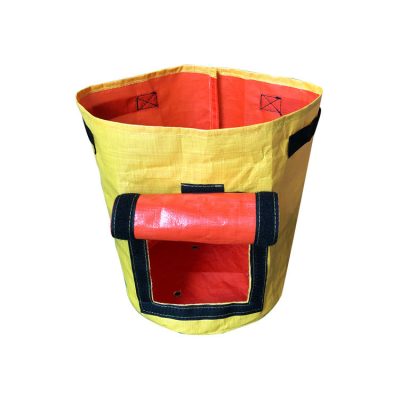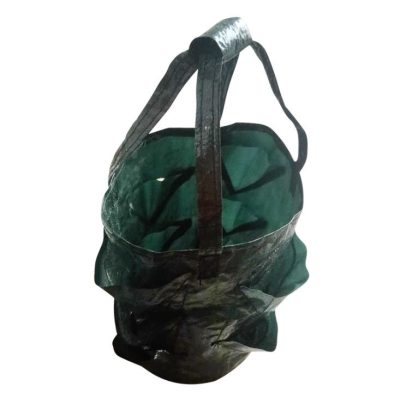When comparing woven plastic grow bags with other plant containers, it’s essential to consider their unique characteristics and how they impact plant growth. Here’s a comparative analysis of woven plastic grow bags with other common plant containers:
- Plastic Pots: Plastic pots are a popular choice for container gardening. Here’s how they compare to woven plastic grow bags:
Advantages of Plastic Pots:
- Durability: Plastic pots are generally durable and can withstand outdoor conditions.
- Retention of Moisture: Plastic pots retain moisture well, reducing the frequency of watering.
- Portability: Plastic pots are lightweight and easy to move around as needed.
Disadvantages of Plastic Pots:
- Limited Air Pruning: Plastic pots can lead to circling or binding of roots, restricting proper air pruning.
- Poor Drainage: Some plastic pots may have inadequate drainage, leading to waterlogging and root rot.
- Overheating: In hot climates, plastic pots can heat up quickly and potentially harm the roots.
- Limited Root Breathability: Plastic pots don’t provide the same level of root breathability as woven grow bags.
- Ceramic or Clay Pots: Ceramic or clay pots are known for their aesthetic appeal, but they have some distinct characteristics compared to woven plastic grow bags:
Advantages of Ceramic/Clay Pots:
- Aesthetic Appeal: Ceramic or clay pots can enhance the visual appeal of the garden.
- Stability: These pots tend to be heavier and offer stability, especially for taller or top-heavy plants.
Disadvantages of Ceramic/Clay Pots:
- Poor Insulation: Ceramic or clay pots don’t insulate as well as woven plastic grow bags, making them more susceptible to temperature fluctuations.
- Fragility: Ceramic or clay pots can break or crack if mishandled or exposed to freezing temperatures.
- Limited Drainage: Some ceramic or clay pots may have inadequate drainage, requiring additional measures to ensure proper water drainage.
- Raised Beds: Raised beds provide a larger planting area and are often constructed using wood, stone, or metal. Here’s how they compare to woven plastic grow bags:
Advantages of Raised Beds:
- Ample Growing Space: Raised beds offer a larger area for planting and can accommodate a greater number of plants.
- Enhanced Drainage: Raised beds typically have excellent drainage, preventing waterlogging.
- Deep Root Development: Raised beds provide ample depth for plants with deep root systems.
- Soil Management: Raised beds allow for better soil control and amendment.
Disadvantages of Raised Beds:
- Cost and Installation: Raised beds can be more expensive to set up, requiring materials and labor for construction.
- Space Limitations: Raised beds require a dedicated garden area, which may not be feasible for all gardening setups.
- Difficulty in Relocation: Once constructed, raised beds are not easily moved or relocated.
- Fabric Grow Bags: Fabric grow bags are another alternative to woven plastic grow bags. Here’s a comparison:
Advantages of Fabric Grow Bags:
- Air Pruning and Root Breathability: Fabric grow bags promote better air pruning and root breathability, leading to healthier root systems.
- Enhanced Drainage: Fabric grow bags typically provide excellent drainage, preventing waterlogging.
- Lightweight and Portable: Fabric grow bags are lightweight and easy to move, allowing for flexibility in gardening setups.
Disadvantages of Fabric Grow Bags:
- Durability: Fabric grow bags may not be as durable as woven plastic grow bags and may require more frequent replacement.
- Retention of Moisture: Fabric grow bags may dry out faster than woven plastic grow bags, requiring more frequent watering.








